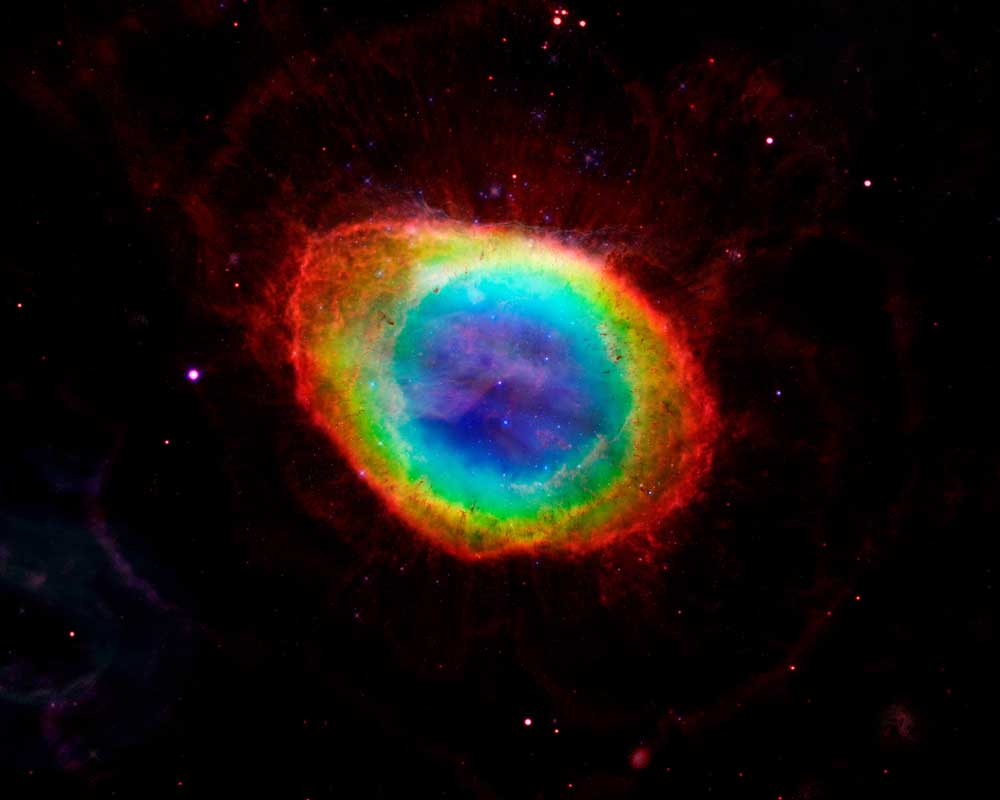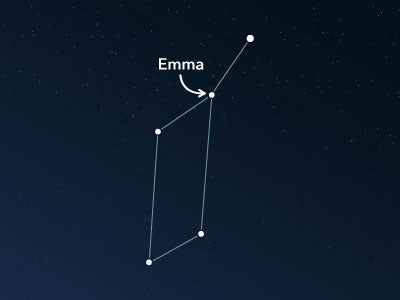The constellation Lyra
Caractéristiques
- Nom latin
- Lyra
- Hémisphère
- Hémisphère nord
- Visibilité
- June - October
- Région
- 286 deg²
- Étoile la plus brillante
- Vega (HIP number 91262)
- Spécialités
- Star clusters, planetary nebulae, galaxies

Lyra, Latin for lyre or harp, is a small constellation in the northern sky. It is one of the 48 constellations described by the Greco-Roman astronomer Claudius Ptolemy in ancient times. Several interesting deep-sky objects in its area can be observed.
Hemisphere, visibility, and area
The constellation Lyra lies in the northern hemisphere and can be seen from all regions of the northern half of the world. It can also be observed in many places south of the equator, as it is visible up to the 43rd parallel, which corresponds to regions such as the island of Tasmania, south of Australia.
June to October offers the best opportunity to discover the constellation in the night sky. It is particularly well visible in August.
With an area of approximately 286 square degrees, Lyra is a medium-sized star constellation. Compared to all other 88 constellations, it ranks 52nd.
In most visualizations, four stars are connected to form a diamond shape. An additional line is drawn to a fifth star, the northernmost point of the constellation's representation and the brightest star in the entire constellation. Its name is Vega (Latin: α Lyrae, Alpha Lyrae), or Wega. It has an apparent magnitude of roughly 0.09 and is thus one of the five brightest stars in the entire night sky.
Together with the main stars in the constellations Aquila and Cygnus, it also forms the Summer Triangle.
Vega and the adjacent constellations provide a good guide for finding Lyra in the night sky. While Draco borders to the north, the large constellation Hercules stretches to the east and south. The Vulpecula also borders to the south, while the Cygnus is located directly to the west.
Specialties in the constellation
There are several exciting objects in the area of Lyra, including globular clusters, open star clusters, planetary nebulae, and different galaxies.
Between the stars Sulafat (Latin: γ Lyrae, Gamma Lyrae) and Sheliak (Latin: β Lyrae, Beta Lyrae), there is the planetary nebula NGC 6720, also known as M57 (Messier 57). It is also called the Ring Nebula because of its ring-like appearance when viewed through a telescope. It is the remains of a star that has shed its outer layers.

The other objects in the constellation are not particularly bright and, therefore, difficult to observe in the night sky.
Mythology and history
Lyra is said to represent the musical instrument of the famous singer Orpheus. After the Greek god Hermes had made it from the shell of a turtle and later gave it to his half-brother Apollo, he passed it on to Orpheus.
He quickly learned to master the instrument and was able to fill people and animals with indescribable happiness. Orpheus was not only known as a musician and singer but also as a poet and writer. He traveled the country to inspire his surroundings. During one of his journeys, he met the nymph, Eurydice, fell in love with her, and married her.
However, on their wedding night, she was killed by a venomous snake. Orpheus desperately sought her in the realm of the dead and actually managed to convince the god of the underworld, Hades, to let his beloved wife go with his music.
Hades set him only three conditions: he had to play his lyre non-stop on the way back to the world of the living, walk ahead of Eurydice, and not turn around until they reached the daylight. However, because of the music, Orpheus couldn't hear his wife's steps and turned longingly to look at her. As a result, he lost her and died alone with a broken heart. To remember his skills, Zeus set the lyre in the starry sky.
In earlier versions, Lyra represented a vulture and was associated with the Stymphalian birds and the hero Hercules. The birds were monsters in Greek mythology with iron beaks.
PubliéLire d'autres articles intéressants

An overview of all 88 constellations
Learn more about all 88 constellations and read interesting information about the mythology, visibility, and features.

Application Planétarium
Découvrez le ciel nocturne avec notre application de planétarium !
Disponible pour iOS et Android.

Nommez une étoile dans la constellation Lyre, Harp
Name a star in a constellation and create something that lasts for eternity.